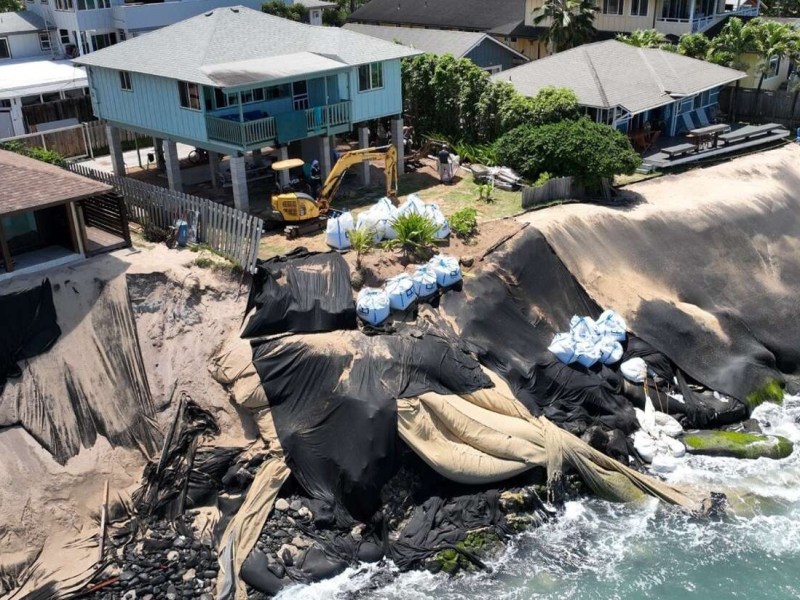Posted on September 29, 2022
Hawaii homeowners are reportedly taking dangerous and illegal measures to prevent their coastal homes from falling and crumbling into the ocean, the Hawaii Department of Land and Natural Resources said in a news release.
Earlier this month, the DLNR used a drone to survey Oahu’s North Shore and discovered that many homeowners were taking “desperate” measures to protect their properties from erosion. In the photos, homes can be seen precariously balancing on slopes while swathes of black fabric and tubes of sand are splashed by the crystal blue water below. While many of the homes were given temporary emergency permits, they’ve reportedly long since expired. Now, the sloppy erosion control structures are threatening public beaches in the area.
“Allowing these structures (erosion control devices) to remain endangers the public beach, limits access to them for much of the year, and is littering the near-shore marine and shoreline environment with debris,” Michael Cain, administrator of the DLNR Office of Conservation and Coastal Lands, said in the release.
“They are supposed to be temporary, to give the landowners time to plan for moving their houses and cesspools, which few have done. There could be even greater environmental catastrophe if houses and their cesspools start falling into the ocean. This is a complicated and difficult situation to resolve,” he added.
According to the release, Hawaii’s shorelines are naturally changing and many are experiencing chronic erosion. While adding structures like seawalls protects homes, it only destroys public beaches. The Office of Conservation and Coastal Lands estimates that at least 13 miles of beach have disappeared in Hawaii thus far. As sea levels rise, erosion will only increase and further endanger coastal communities, the Environmental Protection Agency said.
Cain said in the release that it will take a coordinated response from counties and the state to come up with a long-term solution — and it won’t be easy, as there’s a large population and little room to move inland.
“We’re actively working with county planning departments and State legislators to try and identify solutions. We’re not alone,” he said. “Coastal communities across the world are facing similar situations.”






